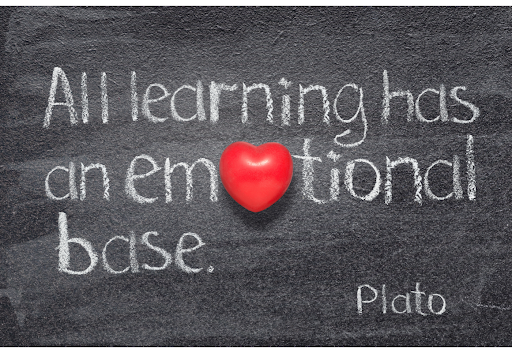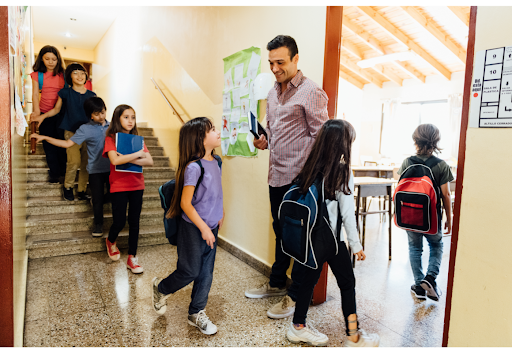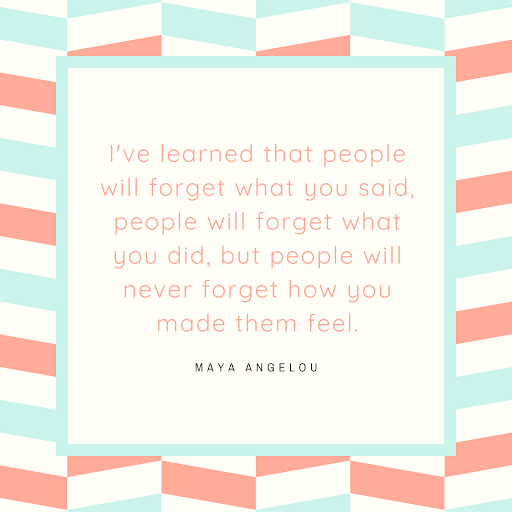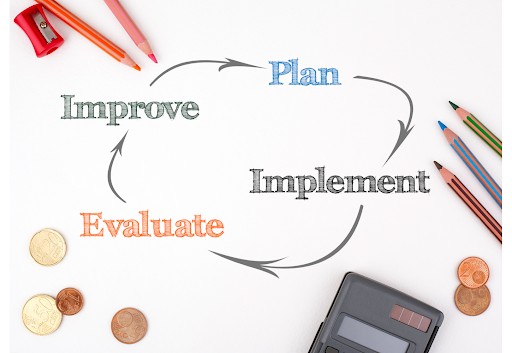Have you ever felt more like a counselor than a teacher? There are more times than I can count that I have had to throw out my lesson plans to help students resolve a conflict, fight off anxiety, or process what is going on at home.
At the end of an exhausting day, I am often left wondering, I’m expected to help my students meet academic standards, but what about their social-emotional well-being? Why do we talk so much about the one, and not about the other? Will there ever be enough time in the day to do both well?
What do we need to do to help students thrive both academically and emotionally?
ReadTheory Survey

Back in May, I worked with my colleagues at ReadTheory to find out exactly that! The survey consisted of questions addressing four main topics:
- Teachers’ perceptions of social-emotional learning
- The challenges faced in teaching social-emotional learning skills
- Resources available to teach social-emotional learning skills
- Strategies to effectively implement social-emotional learning in the classroom
Our goal was to better understand the current climate of teaching social and emotional skills in K-12 classrooms and to create an action plan to better address the needs of students.
What We Learned
The results of the survey were affirming of my experience but also sobering. I wasn’t alone in feeling overwhelmed and ill-equipped to help my students!
I’ll share a few of our takeaways and tips for your own instructional practice below. For more information about this survey, check out the ReadTheory survey findings and discussion page here.
Social Emotional Learning is Imperative

Our first takeaway from the survey was that teachers agree that social-emotional learning is crucial to a child’s success. 89% of survey participants indicated that teaching social-emotional learning skills is important.
Moreover, 97% of survey participants indicated that social-emotional needs affect academic performance. Since the pandemic, students are less motivated and more anxious, depressed, and insecure.
If you’ve been in the classroom for more than one day, you should know that students need help both figuring out their emotions and understanding those of others. If a student is sad, angry, or anxious, there is no way we can expect them to learn their multiplication tables or identify the theme of a passage.
Teachers Lack Training and Resources

Although we all agree that social-emotional learning is both critical to a child’s academic success and development, many barriers exist to teaching this in our classrooms.
More than half of us aren’t being trained to teach those skills. In fact, 53% of the survey respondents had not received training on social-emotional learning.
Even if we are trained, the majority of us feel that we also lack the time and support in school and at home to teach these skills! We don’t have solid curriculums, and we don’t have time to implement them.
3 Pillars of a Social-emotional Learning Curriculum

After reading about other teachers’ experiences and researching best practices in teaching social-emotional skills, we identified 3 key components of social-emotional learning: cultivating self-awareness, building empathy, and problem-solving.
Cultivating Self-Awareness
First and foremost, students need to know how to identify their own feelings. They need help figuring out what they are feeling and why they feel the way they do!
Reading books about emotions, modeling how to process feelings, and creating opportunities to self-reflect through writing, art, or music can help. Select read-alouds that have social-emotional learning content such as characters navigating anxiety, perfectionism, or depression.
In addition, teach vocabulary to help students articulate their thoughts and feelings. The Center on the Social and Emotional Foundations for Early Learning at Vanderbilt University produced a great article with ideas on how to do this. Check it out here.
Building Empathy

So Jennifer knows she is angry, but does she understand how Kara feels? We must take the time to help students identify how others are feeling. Then, we must teach them to value the perspective of others.
This can look like leading a lesson on diversity and appreciating each others’ differences. It can also look like holding a morning meeting every day!
As a homeroom teacher, I used to have my students sit in a circle and take turns discussing a prompt about a non-academic topic. I then would explicitly teach students how to make eye contact, actively listen, and respond to peers. Practicing these skills over and over again helps students connect with their peers.

I seek to model language that evokes empathy by making statements such as “I’m sorry you feel that way”, “that must be very difficult”, or “it’s understandable that you feel ___.” Our words are powerful and we need to teach students to use their words for good. When you see your students showing grace to one another, praise them! Remember– you are teaching students not just how to love and respect others, but also that you love and respect them as well.
Problem Solving
Finally, students need to be taught coping skills to manage their emotions and social skills to communicate effectively during conflict.
Talk with students 1:1 about their frustrations, needs, and struggles. Validate their concerns and communicate that you want them to feel safe. Check out this article from Michigan State University for ideas on how to navigate these conversations.
Perhaps most importantly, facilitate discussions in resolving student conflicts to equip students to do it themselves.
Creating School-Wide Change

We’ve discussed what social-emotional learning curriculums should address. But for real change to happen, we need to go beyond our classroom walls.
Addressing the mental health crisis of our current age requires collaboration and unity across a school. We start with listening to the voices of others to understand the needs of our school community.
I’ve provided a brief action plan for your school that we encourage you to follow below:
- Evaluate professional learning needs: Determine what educational practitioners at your school need to learn about social-emotional instruction. Conduct a school-wide survey and then review the results to determine the greatest learning needs of your school staff.
- Select resources: Identify tools (ie books, videos, songs, instructional strategies) that are explicit and easy to implement. Choose a curriculum that can be implemented across all classrooms as well as address the needs demonstrated through the survey.
- Schedule and implement professional development: Training your staff is critical in making sure that they are able to relay and teach well. Identify 2 dates during the school year that teachers can be trained, one at the beginning of the year to introduce
the curriculum, and one at the middle of the year to provide additional strategies and tools. Implement professional development. - Create a school committee: Gather a wide range of stakeholders reflective of the school community to function as a social-emotional learning committee. Develop a plan within the committee to implement the curriculum and oversee its effectiveness. Set a timeline for implementation goals.
- Implement the social-emotional learning curriculum and engage with families: Communicate what students are learning with families. Provide opportunities for families to engage in follow-up conversations and learning activities at home.
- Evaluate the effectiveness of the social-emotional learning curriculum: Measure the progress of the curriculum (i.e. quarterly or monthly surveys and interviews). Analyze feedback and share findings with the school community.
- Make modifications and implement changes: Make timely changes to the curriculum, share those changes with teachers, and implement changes effectively.
I hope that utilizing this action plan will help you and your school community effectively address the needs of your students.
Self-Care Isn’t Selfish

Students need to be taught how to identify and manage their emotions, engage in productive conversations, understand the feelings of others, and cope during challenges.
However, teachers need to take care of themselves too! 63% of survey participants stated that their mental wellness had impacted their instruction. We are human. We cry, we yell, we disappoint ourselves, and we disappoint others. Give yourself grace. Talk about what you are experiencing. Give yourself the freedom to take breaks and do things that rejuvenate you.
For strategies on how to care for your own mental health, check out my article “Teacher Health-Check: How to Care for Yourself and Your Colleagues in Year 2 of the Pandemic.” I share a little about my own journey as an educator and how I overcame burnout, anxiety, and all the like!
The work we do to shape the world’s future leaders is taxing. Nevertheless, it is all worth it because it makes a difference. As Henry Adams said, “a teacher can affect eternity; he can never tell where his influence stops.”
References
Ashdown, D. M., & Bernard, M. E. (2012). Can explicit instruction in social and emotional learning skills benefit the social-emotional development, well-being, and academic achievement of young children? Early Childhood Education Journal, 39(6), 397-405. doi:https://doi.org/10.1007/s10643-011-0481-x
Daunic, A., Corbett, N., Smith, S., Barnes, T., Santiago-Poventud, L., Chalfant, P., Pitts, D., & Gleaton, J. (2013). Integrating social-emotional learning with literacy instruction: an intervention for children at risk for emotional and behavioral disorders. Behavioral Disorders, 39(1), 43+. https://link.gale.com/apps/doc/A366864691/AONE?u=wilm99594&sid=bookmark-AONE&xid=20748ea9
Lawson, G. M., McKenzie, M. E., Becker, K. D., Selby, L., & Hoover, S. A. (2019). The core components of evidence-based social emotional learning programs. Prevention Science, 20(4), 457-467. doi:https://doi.org/10.1007/s11121-018-0953-y
Philibert, C.T. (2016). Everyday SEL in Elementary School: Integrating Social-Emotional Learning and Mindfulness Into Your Classroom (1st ed.). Routledge. https://doi-org.liblink.uncw.edu/10.4324/9781315697079
Weissberg, R. P., & Cascarino, J. (2013). Academic learning + social-emotional learning = national priority. Phi Delta Kappan, 95(2), 8. Retrieved from https://www.proquest.com/scholarly-journals/academic-learning-social-emotional-national/docview/1438894163/se-2?accountid=14606




1 reply on “Social-Emotional Learning: Where We Fall Short and What We Can Do About It”
Thank you for a great article!